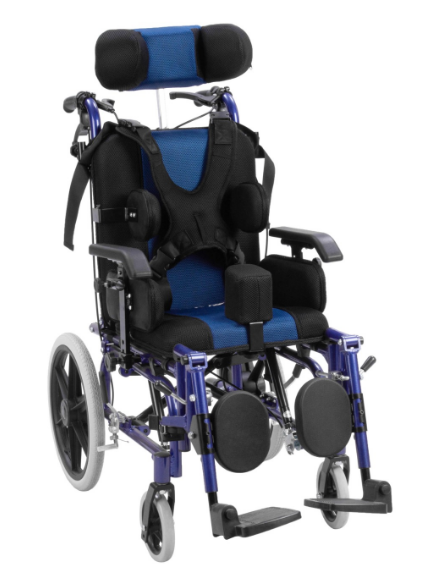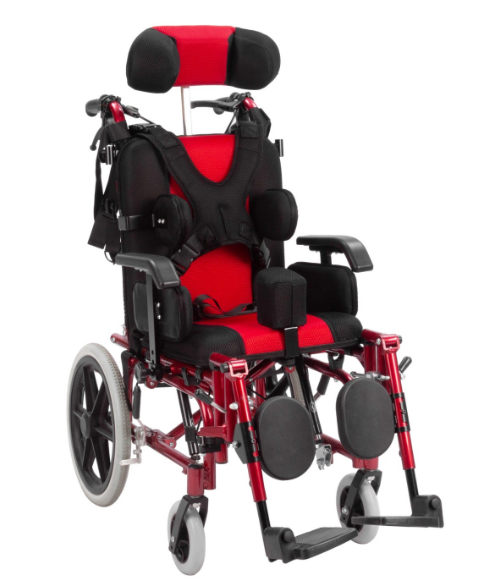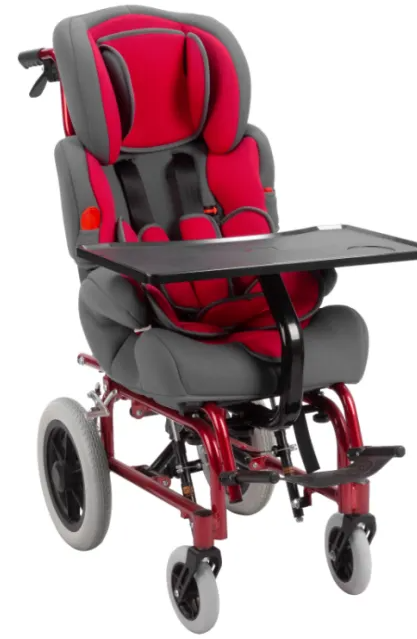A New Cerebral Palsy Wheelchair for Emily
The first time I saw Emily struggle to move across the room, my heart ached. At seven years old, she had already faced more challenges than most children her age. Born with cerebral palsy, her muscles refused to cooperate the way she wanted them to. She would try to crawl, her arms trembling with effort, but her legs wouldn’t follow. Her parents, Sarah and Mark, did everything they could to help her—physical therapy, leg braces, even holding her hands as she attempted shaky steps. But it wasn’t enough.
Then, one afternoon, everything changed.

The Long Wait
Emily’s family had been on a waiting list for a specialized wheelchair for months. Standard wheelchairs didn’t provide the support she needed—her body would slump to one side, and she couldn’t propel herself without help. But finally, the call came: a pediatric wheelchair, designed specifically for children with cerebral palsy, was ready for her.
I still remember the day the cerebral palsy wheelchair arrived. A sleek, lightweight frame with bright red accents (her favorite color), adjustable straps, and a cushioned seat that cradled her body perfectly. The therapist explained each feature—how the headrest supported her neck, how the lateral pads kept her from leaning too far, and how the footrests could be adjusted as she grew.

The First Ride
Emily’s eyes widened as her father lifted her into the chair. At first, she gripped the armrests tightly, unsure. But then the therapist showed her how to touch the joystick. With a gentle nudge, the cerebral palsy wheelchair moved forward.
A smile spread across Emily’s face—a real, unguarded smile. She giggled as she rolled across the living room, her hands no longer dragging on the floor, her back straight for the first time in years.
“Look, Mommy! I can go fast!” she said, pressing the joystick again.
Sarah wiped away tears as she watched her daughter zip around the room, her laughter filling the house. For the first time, Emily wasn’t just being carried or assisted—she was in control.

A New World of Possibilities
The cerebral palsy wheelchair didn’t just give Emily mobility—it gave her freedom. At school, she could finally move alongside her classmates instead of being pushed in a bulky, ill-fitting chair. She joined them at the playground, her wheelchair navigating the smooth pathways as they ran beside her.
One day, her teacher told me how Emily had raised her hand to answer a question—something she rarely did before. “I think she feels more confident now,” the teacher said. “Like she belongs.”
A Future with Wheels
Now, Emily talks about what she wants to be when she grows up—a teacher, a scientist, maybe even a wheelchair racer. Her old struggles haven’t disappeared, but they no longer define her.Sometimes, I watch her wheel herself down the sidewalk, her parents walking beside her, no longer carrying her weight in their arms. The cerebral palsy wheelchair isn’t just a device—it’s a part of her, an extension of her determination.
And as she speeds ahead, laughing into the wind, I realize something important: this cerebral palsy wheelchair didn’t just help Emily move. It helped her fly.
Emily’s story is just one of many. For children with cerebral palsy, the right wheelchair isn’t just about mobility—it’s about independence, confidence, and the chance to live fully. Technology and compassion came together to give Emily a new beginning. And as she rolls forward into her future, one thing is certain: she’s going places.

